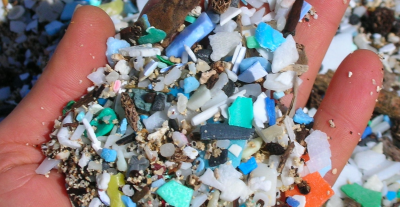New Delhi, 31 January (IANS). A team of doctors in the US have found high concentrations of microplastics and nanoplastics in premature infants’ placenta.
Microplastics are measured in less than 5 millimeters and nanoplastics in one meter billion. It does not appear with naked eyes. They are widely spread in the environment.
Previous researches have shown that the use of plastic is generally harmful to both environment and humans.
A team of scientists at the University of Beller College of Medicine, Texas Children’s Hospital and New Mexico found that prematurely born placenta had a high level of microplastics and nanoplastics.
They were at a higher level than the first measured level in human blood. This showed that there was a possibility of plastic accumulation in the placenta during pregnancy and there was more risk and accumulation in premature birth cases.
Prominent writer Enriko R. Berozo said, “It was surprising to find high concentrations of the placenta in children born prematurely, because if it was the result of pregnancy period, what you would have expected would have been the opposite.”
Enrico R. Bellar College of Medicine, Berozo Houston and Assistant Professor in the Department of Maternity and Gynecology at Texas Children’s Hospital.
The team said that premature infants born premature infants born prematurely have more microplastic and nanoplastic in the placenta.
In the essence published in the pregnancy journal, the team said, “This indicates the possibility that the accumulation of plastic may contribute to premature birth risk and event.”
The team used highly sensitive mass spectrometry to analyze 175 placenta and compared them to 100 placenta collected at the appointed time and premature 75 placenta (less than 37 weeks of pregnancy).
This study is included in increasing evidence against microplastics and nanoplastics, which may ranging from heart disease to potential strokes.
The team stated that it reflects the real risk of plastic contact on human health and disease. The study will be presented at the annual meeting of the Society for Matter-Fetal Medicine (SMFM) in Colorado, USA.
-IANS
AKS/CBT










